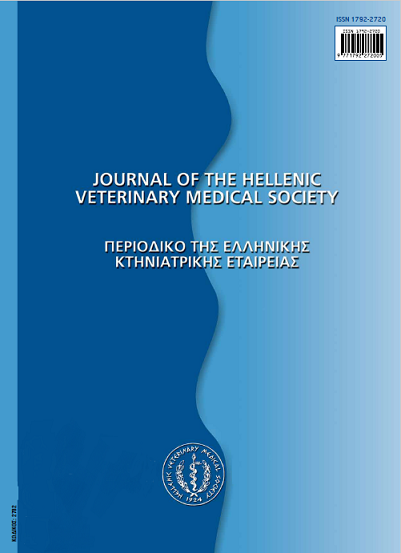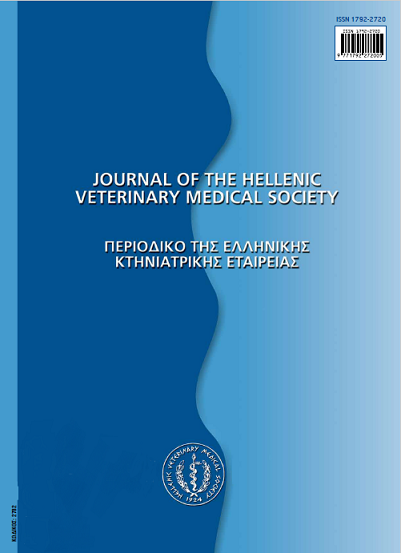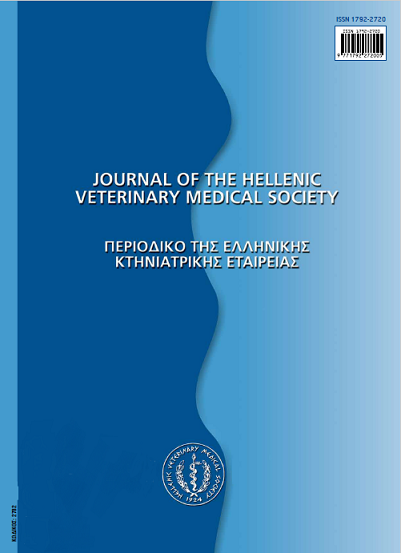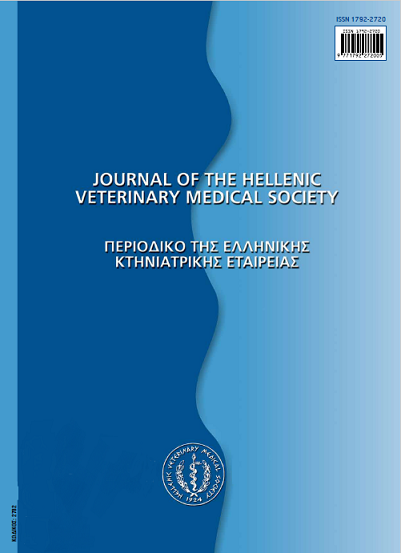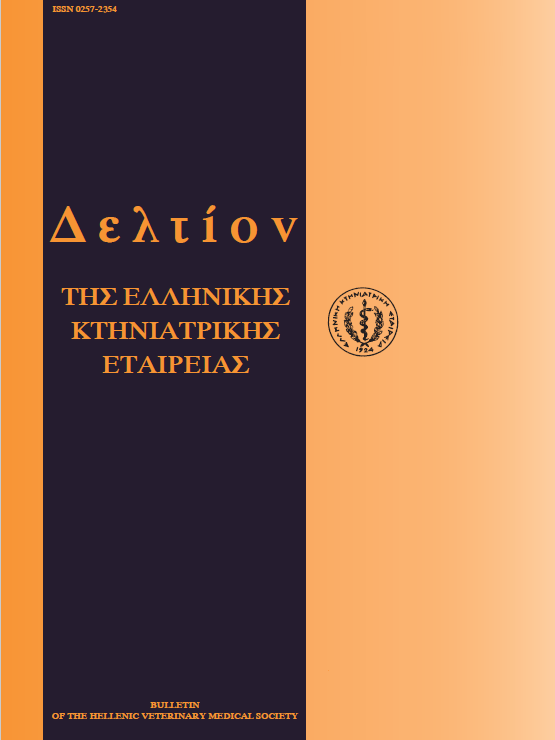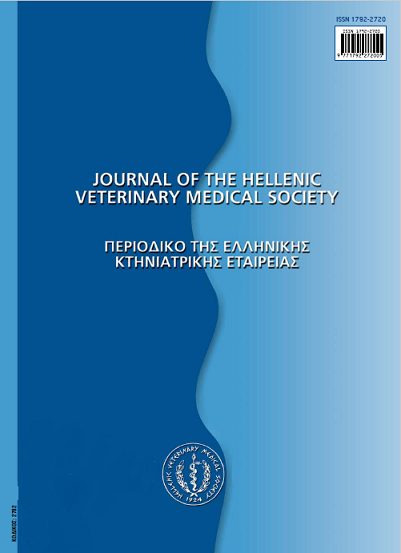Εκτίμηση της εποχικότητας και του ποσοστού προσβολής του ισοποδου παρασίτου Ceratothoa oestroides, Risso, 1836, στην Ελλάδα.
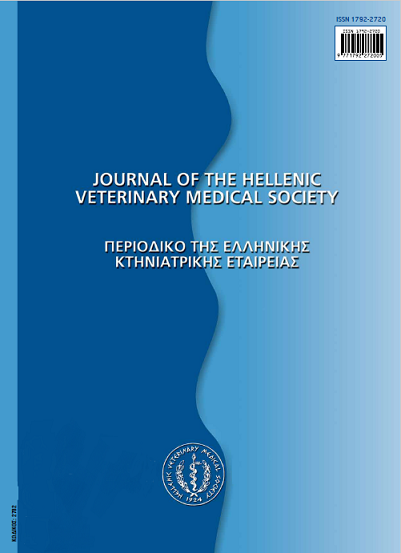
Περίληψη
Σκοπός της παρούσας εργασίας ήταν η μελέτη της εποχικότητας του ισοπόδου παρασίτου Ceratothoa oestroides(Risso, 1836), σε δυο διαφορετικές εκτροφές, στην περιοχή της Χίου και στην περιοχή του Αστακού. Σε κάθε μονάδα εξετάζονταν συνολικά 80 λαβράκια και 80 τσιπούρες σε κάθε δειγματοληψία. Από κάθε μονάδα λαμβάνονταν μια εποχιακή δειγματοληψία ανά είδος, οπότε συνολικά πραγματοποιήθηκαν τέσσερις δειγματοληψίες ανά είδος, οι οποίες διήρκησαν ένα χρόνο. Τα δείγματα συλλέγονταν από τους ίδιους κλωβούς και καταγράφονταν τα μέσα βάρη τους, καθώς και οι μέσες θερμοκρασίες ανά εκτροφή.Στην τσίπουρα το ισόποδο παράσιτο Ceratothoa oestroides βρέθηκε μόνο στην περιοχή του Αστακού σε ποοοοτό 31,2%, παρουσιάζοντας το μεγαλύτερο ποσοστό μόλυνσης τους καλοκαιρινούς μήνες. Στο λαβράκι το παράσιτο βρέθηκε και στις δυο περιοχές σε ποσοστό 33,75% και 55,25%, αντίστοιχα. Εδώ παρατηρήθηκε ότι το ποσοστό μόλυνσης στον Αστακό έφτασε στο μέγιστο την άνοιξη (90%) σε αντίθεση με τη Χίο όπου τη μέγιστη τιμή την είχε το καλοκαίρι (60%). Τέλος, τα νεαρά άτομα του σταδίου pulii II του παρασίτου ήταν αυτά που προκάλεσαν σοβαρές αλλοιώσεις και τελικά το θάνατο κυρίως των νεαρών ψαριών της τσιπούρας (Sparusaurata) και του λαβρακιοΰ (Dicentrarchuslabrax). Τα μεγαλύτερα ψάρια ξενιστές φάνηκε ότι δεν επηρεάστηκαν ιδιαίτερα από την παρουσία των παρασίτων.
Λεπτομέρειες άρθρου
- Πώς να δημιουργήσετε Αναφορές
-
VAGIANOU (ΣΤ. ΒΑΓΙΑΝΟΥ) S., BITCHAVA (Κ. ΜΠΙΤΧΑΒΑ) C., YAGNISI (Μ. ΓΙΑΓΝΙΣΗ) M., & ATHANASSOPOULOU (Φ. ΑΘΑΝΑΣΟΠΟΥΛΟΥ) F. (2017). Εκτίμηση της εποχικότητας και του ποσοστού προσβολής του ισοποδου παρασίτου Ceratothoa oestroides, Risso, 1836, στην Ελλάδα. Περιοδικό της Ελληνικής Κτηνιατρικής Εταιρείας, 60(1), 14–25. https://doi.org/10.12681/jhvms.14911
- Τεύχος
- Τόμ. 60 Αρ. 1 (2009)
- Ενότητα
- Research Articles
Οι συγγραφείς των άρθρων που δημοσιεύονται στο περιοδικό διατηρούν τα δικαιώματα πνευματικής ιδιοκτησίας επί των άρθρων τους, δίνοντας στο περιοδικό το δικαίωμα της πρώτης δημοσίευσης.
Άρθρα που δημοσιεύονται στο περιοδικό διατίθενται με άδεια Creative Commons 4.0 Non Commercial και σύμφωνα με την άδεια μπορούν να χρησιμοποιούνται ελεύθερα, με αναφορά στο/στη συγγραφέα και στην πρώτη δημοσίευση για μη κερδοσκοπικούς σκοπούς.
Οι συγγραφείς μπορούν να καταθέσουν το άρθρο σε ιδρυματικό ή άλλο αποθετήριο ή/και να το δημοσιεύσουν σε άλλη έκδοση, με υποχρεωτική την αναφορά πρώτης δημοσίευσης στο J Hellenic Vet Med Soc
Οι συγγραφείς ενθαρρύνονται να καταθέσουν σε αποθετήριο ή να δημοσιεύσουν την εργασία τους στο διαδίκτυο πριν ή κατά τη διαδικασία υποβολής και αξιολόγησής της.



